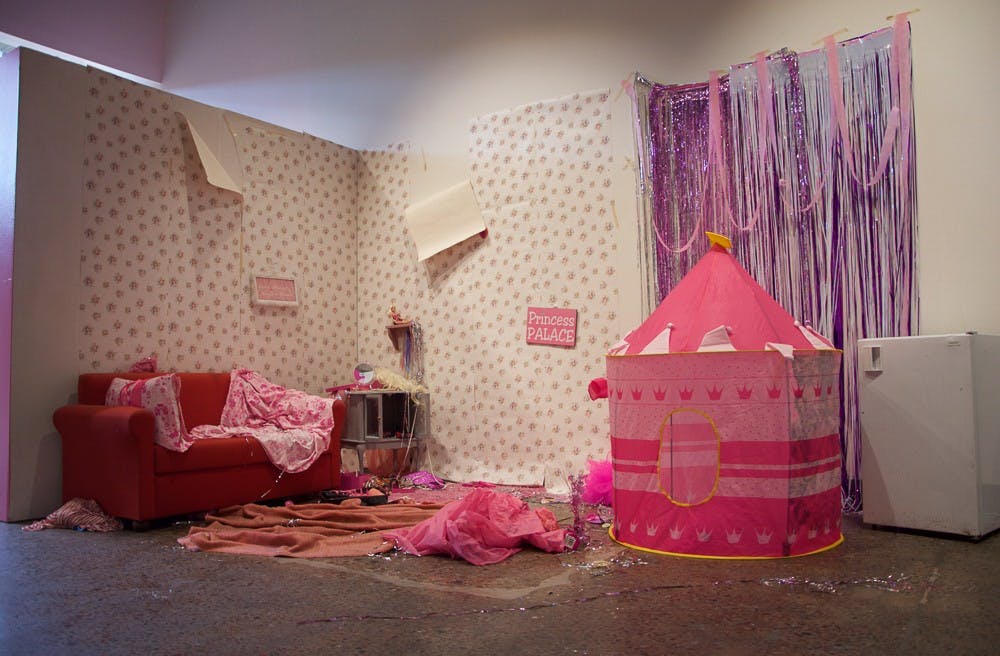An art exhibit exploring gender, sexuality and pop culture through the shifting boundary of girlhood to womanhood opened Friday at The Step Gallery in downtown Phoenix. Through physical and canvas art, the exhibit juxtaposes the painful and weird ways to meet the media expectation of beauty with glitter and the color pink.
ASU studio arts graduate student Samantha Lyn Aasen is behind "Sparkle Baby." She said it was made to represent stereotypes within femininity in today's world.
"It is a manifestation of my own ambivalence towards the Princess-industrial-complex," Aasen said.
She also talked about how the media's interpretation of feminism and the reaction by viewers can create controversy.
"Young women who seek to understand their identity through mass media representations of women find conflicting presentations," Aasen said. "Empowerment of women is shown with the guerilla art movement aimed to end cat calling: 'Stop Telling Women to Smile,' and Beyoncé projecting the word 'feminist' in capital letters at the MTV awards nearly broke Twitter."
When entering the exhibit, a wall with the words "Sparkle Baby" in silver glitter lettering catches the eye. The opposite of pretty hides on the other side of the wall. A miniature room with torn floral wallpaper and tinsel stretched sporadically throughout the room.
There was a pink pillowcase and blanket sprawled on the couch along with other shiny materials. Generally, these items would appear as beautiful or admired; however, they looked ugly as they were combined and thrown around.
"Glitter and pink products appeal to young girls and grown women as symbols of idealized girlhood," Aasen said. "This packaging of girlhood aligns itself with absurd societal expectations of the female form in beauty treatments like Brazilian waxes, acrylic nails, infantilizing clothing and glittery cosmetics for adult women."
From a skull to to a happy face, many stickers glimmered on the wall, making a person cringe at the thought of using these objects as a template on themselves. In order to prove how ridiculous the accessory was, Aasen bought and used materials that could come from any ordinary craft store, decorated them and wore them on herself, all while creating canvases of the images in the exhibit. Examples include googly eyes, accessories the size for dolls and moss with a tiny rake.
Aasen does a great job in destroying the commercial message of beauty. When girls are young and full of life, pretty in pink is a big deal.
There tends to be a cover-up and Aaesen does a good job of revealing the truth. Through a modern mindset, she shows how female childhood products are used to create objects such as vibrators, bachelorette party favors or the other stereotypical decorations.
In order to fully appreciate the art and message displayed, come with an open and mature mind. Some images may be too explicit for those under 18.
The exhibit will be displayed until April 11, so there is still time to check it out.
Reach the reporter at ryan.santistevan@asu.edu or follow @ryanerica18 on Twitter.
Like The State Press on Facebook and follow @statepress on Twitter.




